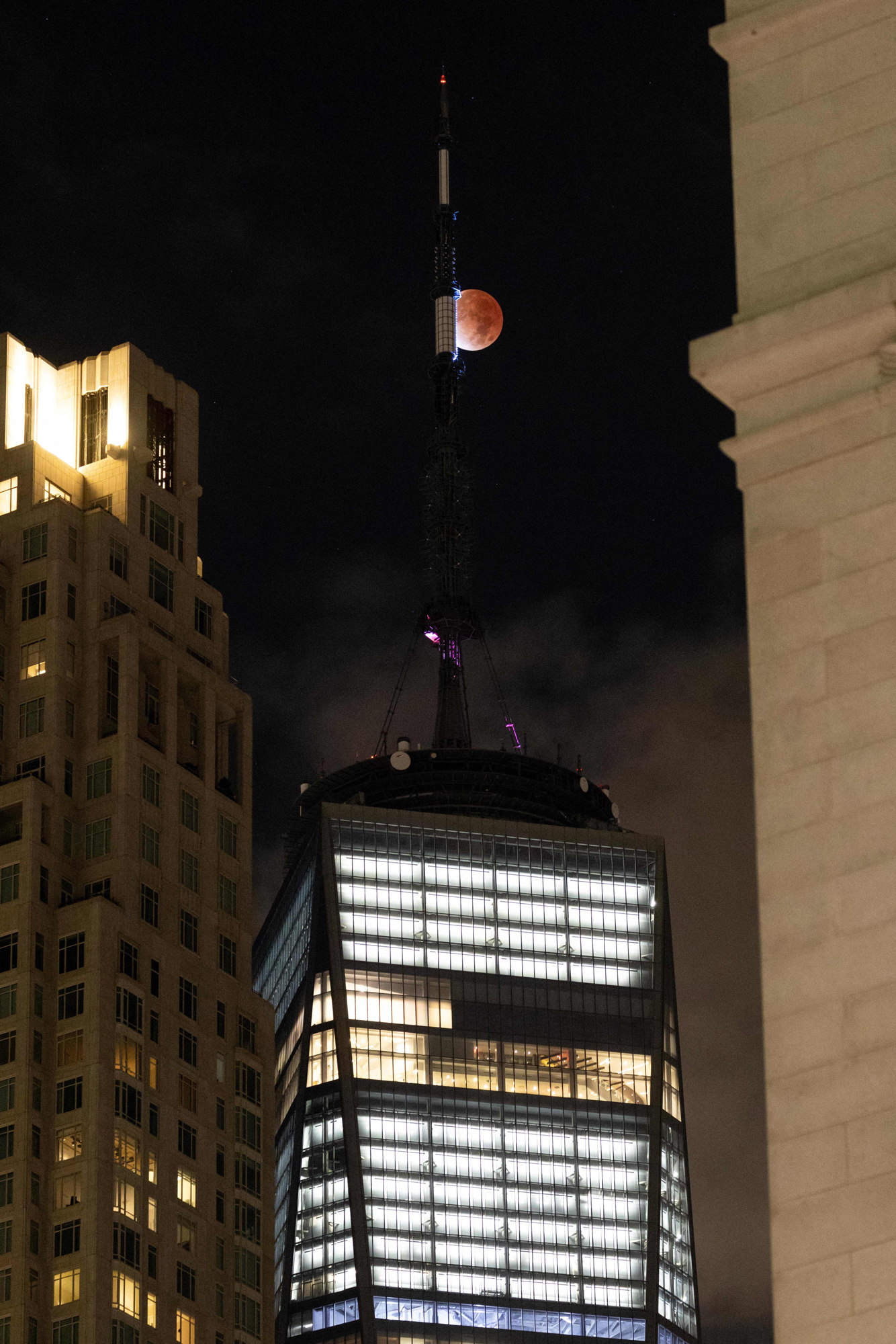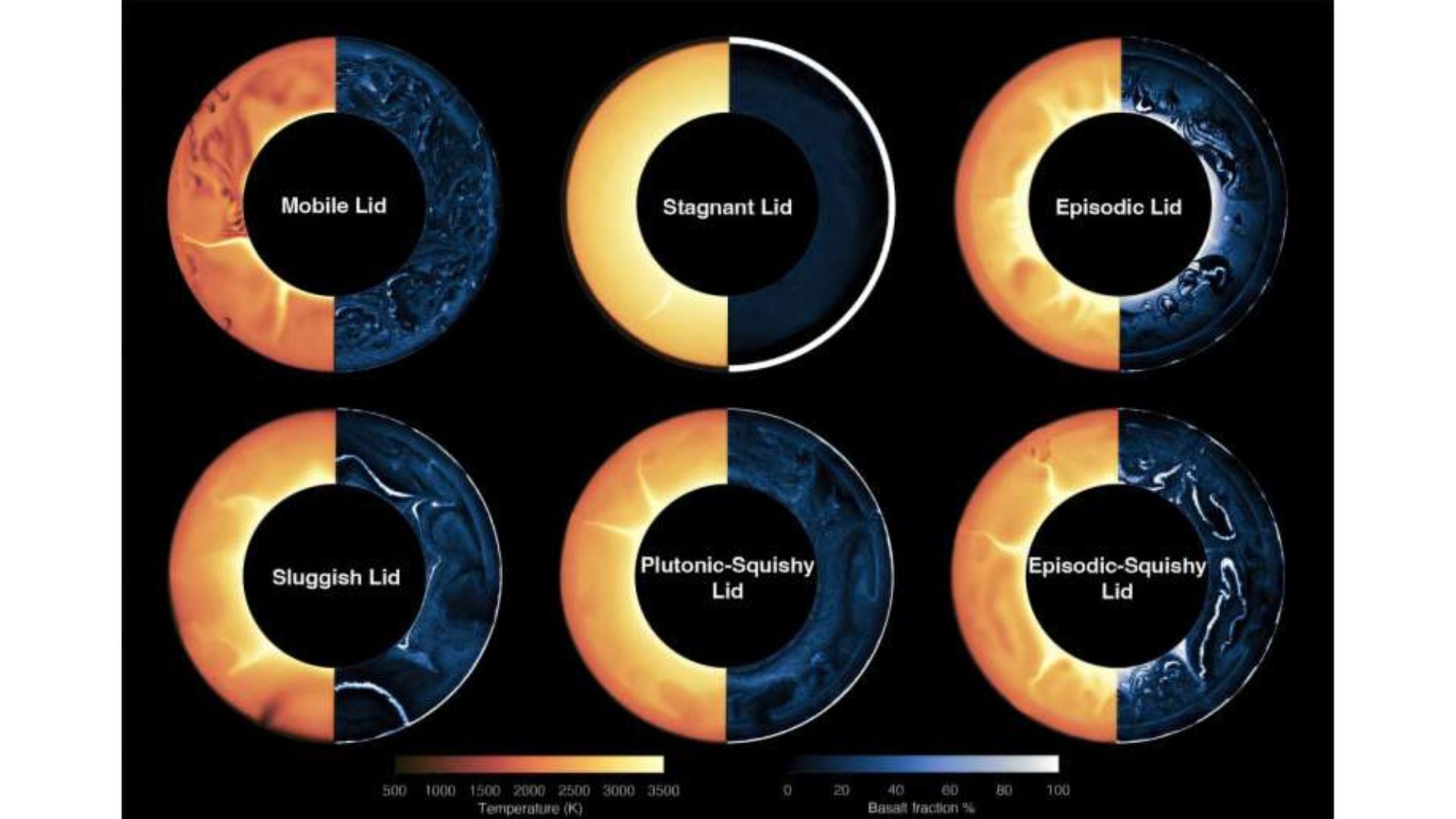2021 Beaver Moon lunar eclipse: Amazing photos of the longest partial moon eclipse in 580 years

The full Beaver Moon of November 2021 passed through Earth's shadow in a partial lunar eclipse overnight on Nov. 18-19 in what was the longest eclipse of its kind in 580 years.
Related: Upcoming lunar eclipse guide
Skywatchers with clear skies across the United States and Canada, as well as Central and South America and parts of Australia, Europe and Asia were able to view the historic Beaver Moon eclipse, in which the moon was 97% covered by the Earth's shadow, taking on a red hue even if the moon phase wasn't a true blood moon.
You can see photos of the Beaver Moon lunar eclipse here as taken by skywatchers and Space.com readers around the world. Just click the arrows above to see the next photo.
In the image above, astrophotographer Randy Dougherty captured the Beaver Moon lunar eclipse at its peak as it shined over Lake Michigan, near Ludington, Michigan, on Nov. 19, 2021.
"I was lucky to have the heavy cloud cover intermittently clear so I could get some photo," he said. He used a Nikon D500 camera with a Sigma 60-600 telephoto lens with also a Sigma 1.4 teleconverter.
You can prepare for the next full moon or lunar eclipse with our guide on how to photograph a lunar eclipse, as well as how to photograph the moon with a camera in general, can help you make the most of the event. If you need imaging gear, consider our best cameras for astrophotography and best lenses for astrophotography to make sure you're ready for the next eclipse.
Click the "next" arrows below or at the top of this page for more amazing Beaver Moon lunar eclipse photos.
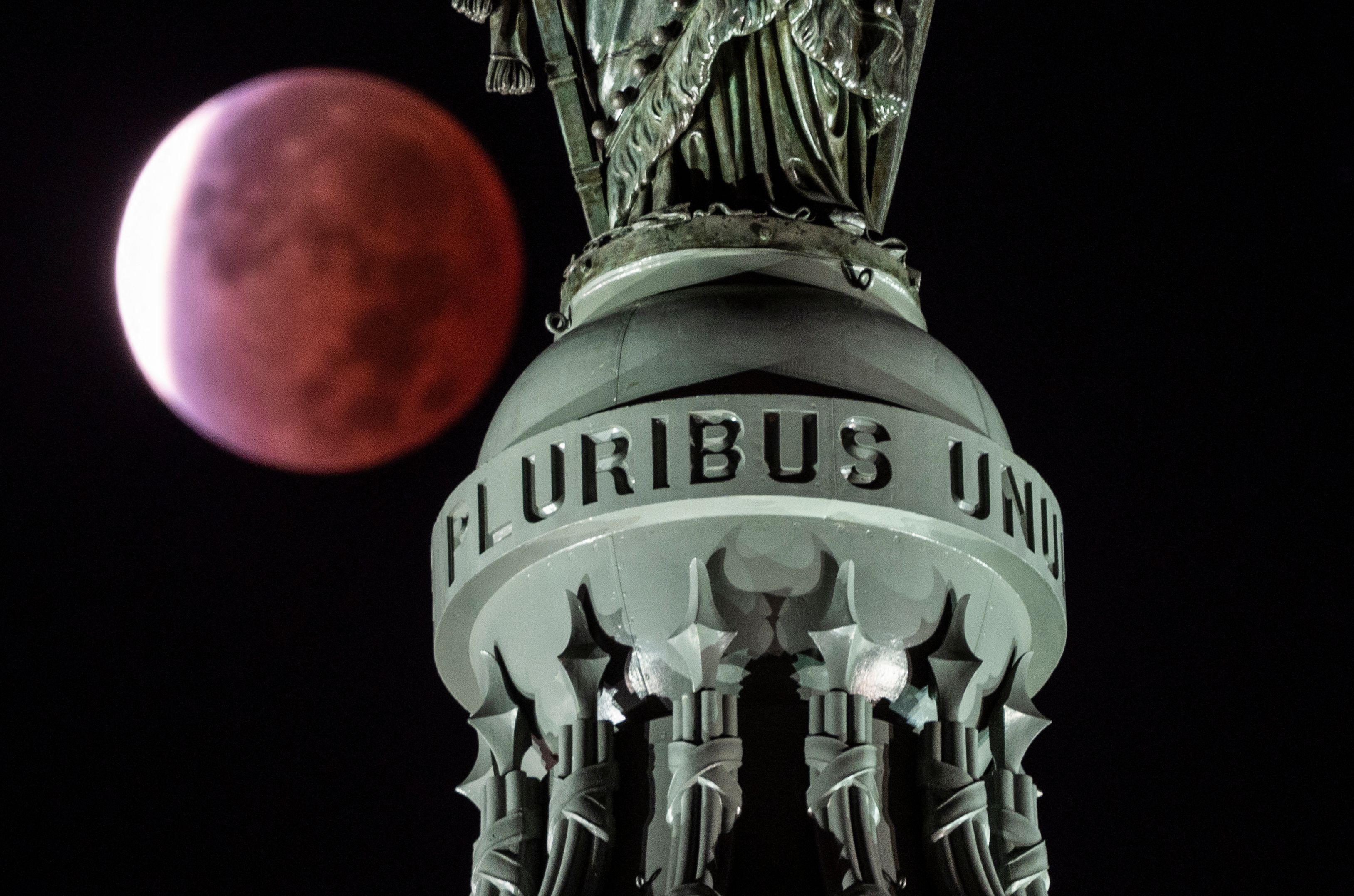
The moon, with a partial lunar eclipse, is seen behind the writing E Pluribus Unum, latin for "Out of many, one" on the Statue of Freedom at the top of the dome on Capitol Hill in Washington, DC early on November 19, 2021.
Photographer Andrew Caballero-Reynolds captured this image for AFP via Getty Images.
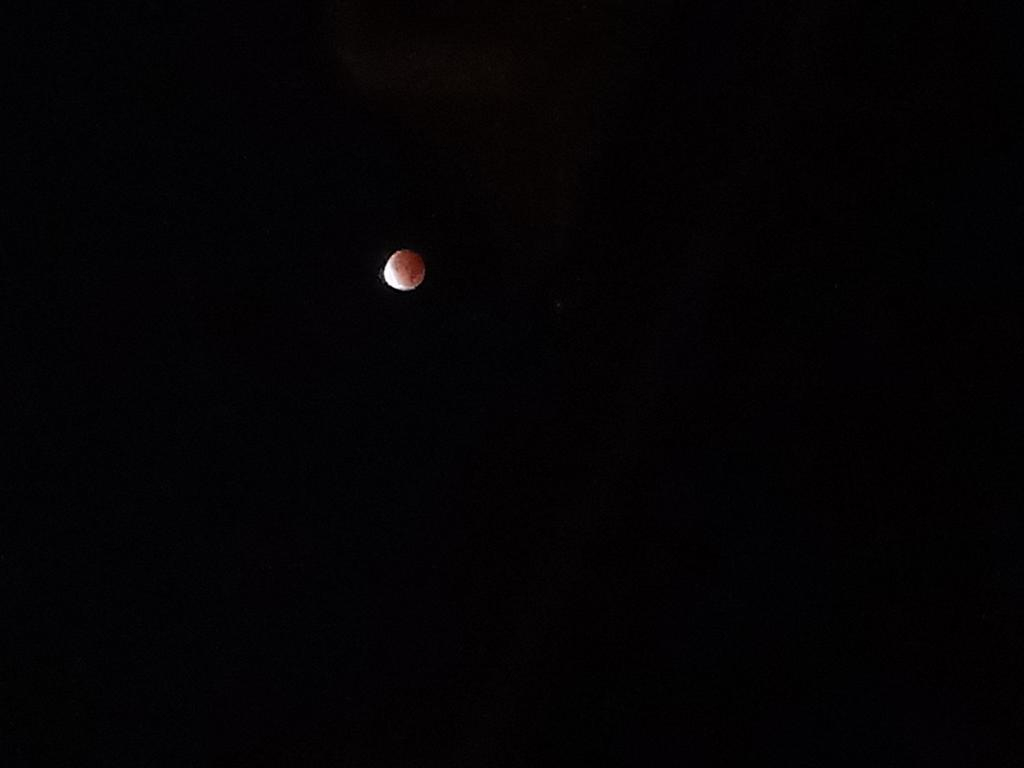
12-year-old skywatcher Zadie Malik of northern New Jersey captured this image of the near-total Beaver Moon partial lunar eclipse of Nov. 19, 2021 after rising from bed at 4 a.m. EST to catch its peak.
Zadie asked her father Tariq Malik (Editor-in-Chief of Space.com) to wake her to see the peak of the lunar eclipse so she wouldn't miss it. She snapped this photo with a cell phone before climbing back into bed to rest up before school.
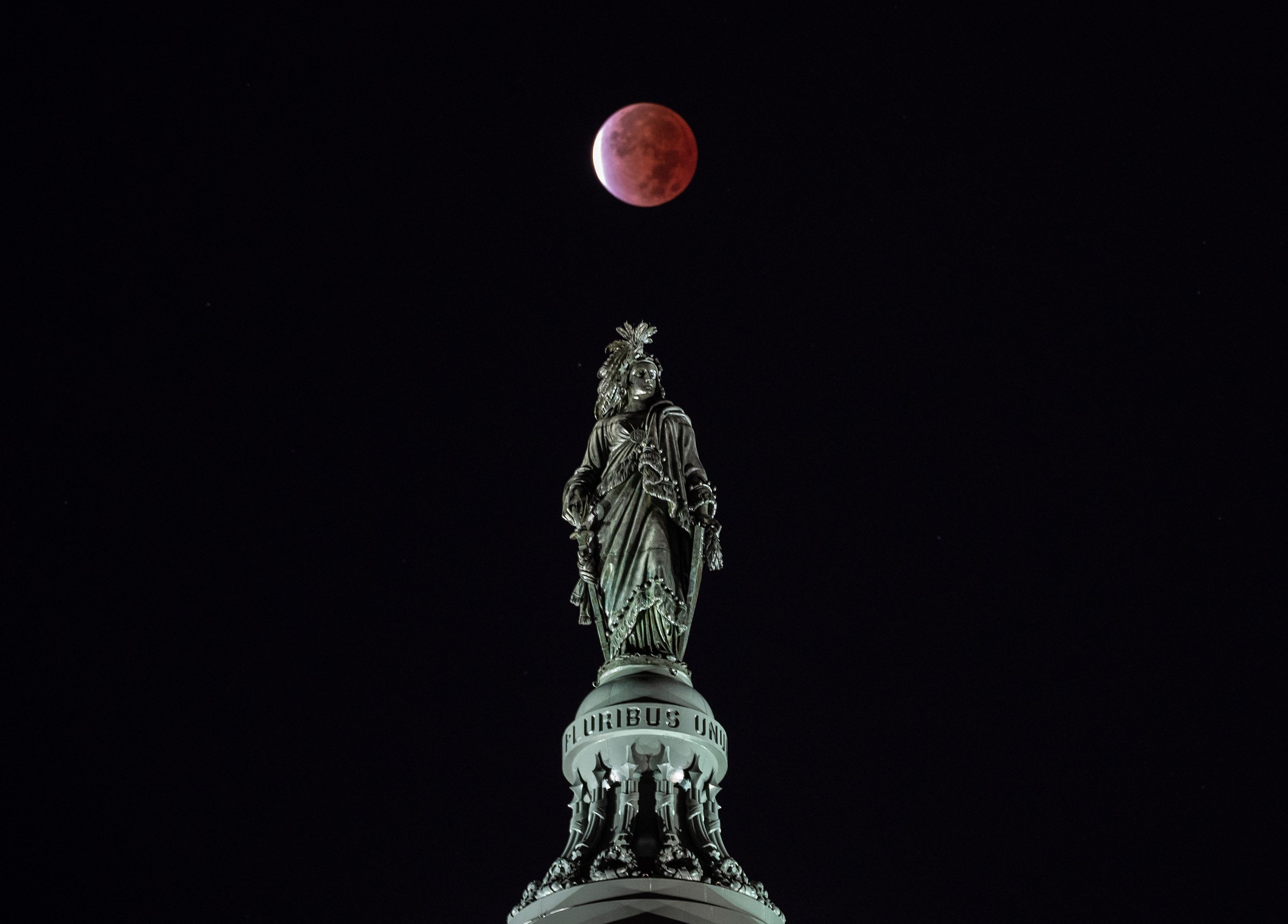
The moon, with a partial lunar eclipse, is seen behind the Statue of Freedom, on Capitol Hill in Washington, DC early on November 19, 2021. Photographer Andrew Caballero-Reynolds captured this image for AFP via Getty Images.
The longest partial lunar eclipse in nearly 600 years, which will bathe the Moon in red, was visible for a big slice of humanity. The celestial show will see the lunar disc almost completely cast in shadow as it moves behind the Earth, reddening 99 percent of its face
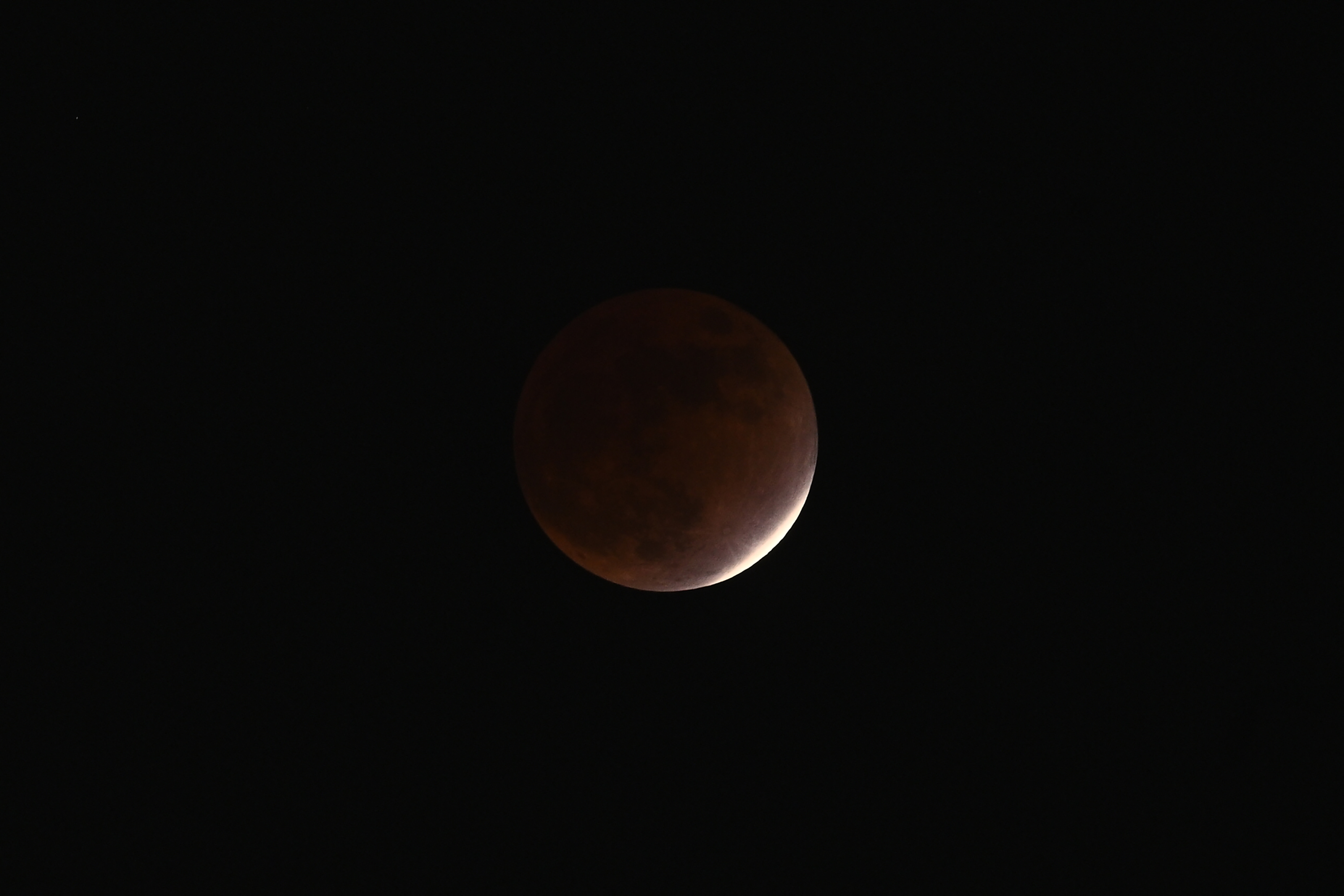
Here, the moon is seen during the Beaver Moon partial lunar eclipse from the observation deck of Roppongi Hills in Tokyo on November 19, 2021.
Photographer Philip Fong captured this photo for the news service AFP and Getty Images. This view shows the eclipse near its peak, as it was 97% covered by Earth's shadow.
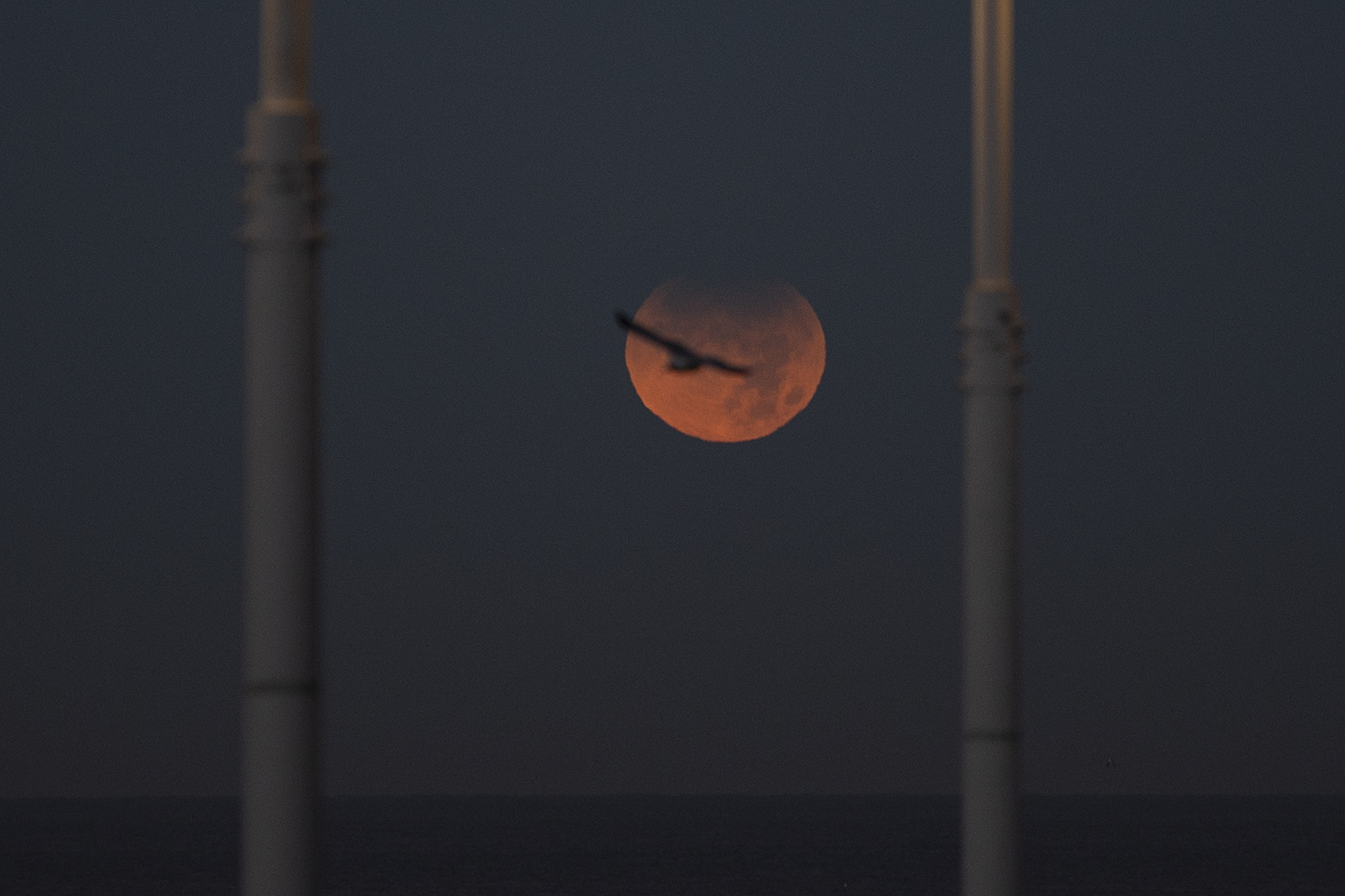
A seagull flies in the sky where a partial lunar eclipse is observed from A Coruña, on Nov. 19, 2021 in A Coruña, Galicia, Spain in this photo by photographer M. Dylan for Europa Press and Getty images.
Coinciding with the full moon, this November lunar eclipse, the longest in centuries, has begun in Spain at exactly 7:02 (peninsular time). Visible to observers in North America, the Pacific Ocean and far eastern Asia, it lasted just over 6 hours, and its passage through the darkest part of the Earth's shadow will last approximately 3 hours, 28 minutes and 23 seconds, making it the longest in centuries.
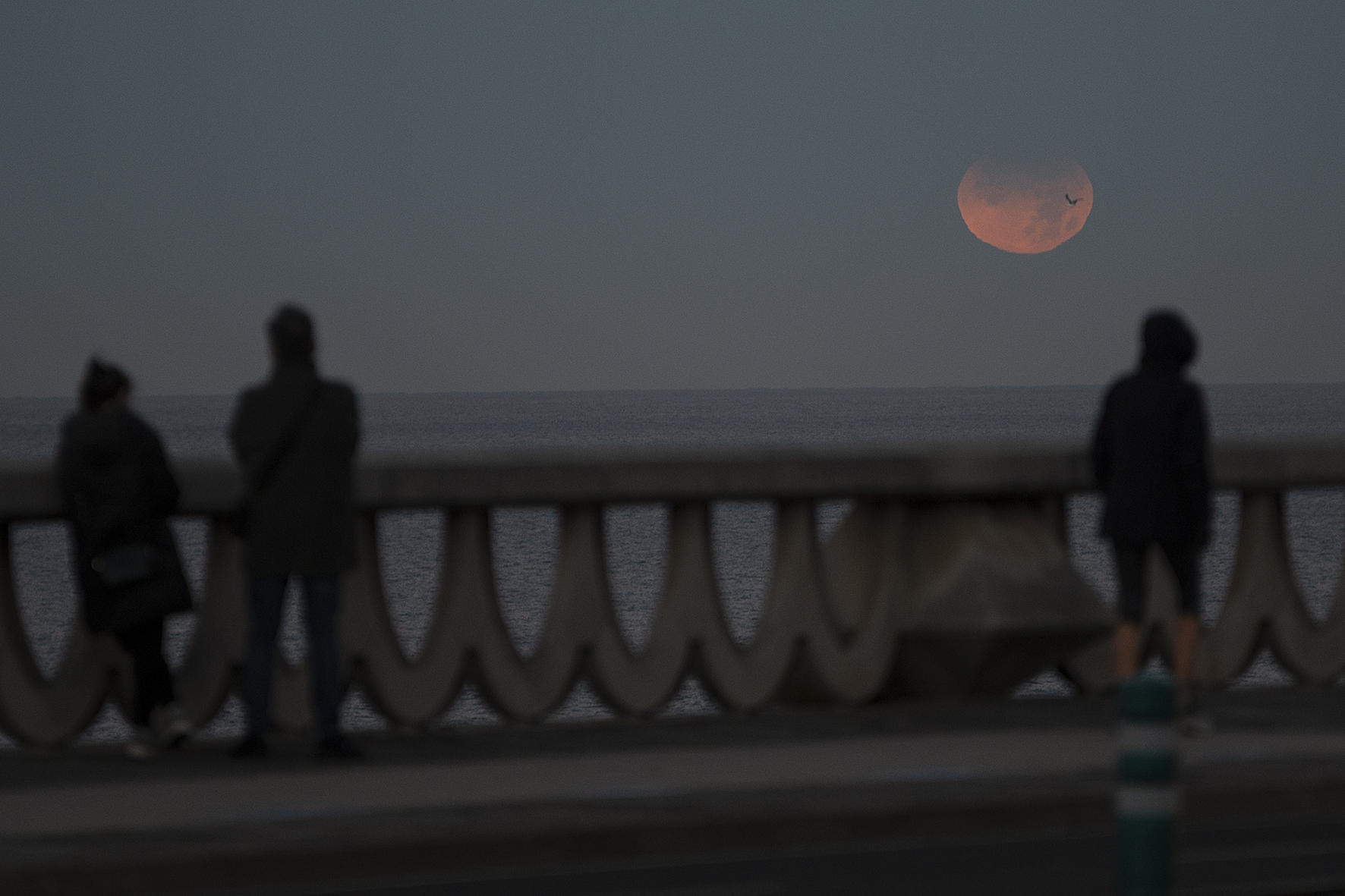
Three people observe a partial lunar eclipse from A Coruña, on November 19, 2021 in A Coruña, Galicia, Spain in this photo by photographer M. Dylan for Europa Press and Getty images.
Coinciding with the full moon, this November lunar eclipse, the longest in centuries, has begun in Spain at exactly 7:02 (peninsular time). It was visible from parts of Europe, Asia, Australia and all of North America, Central America and South America.
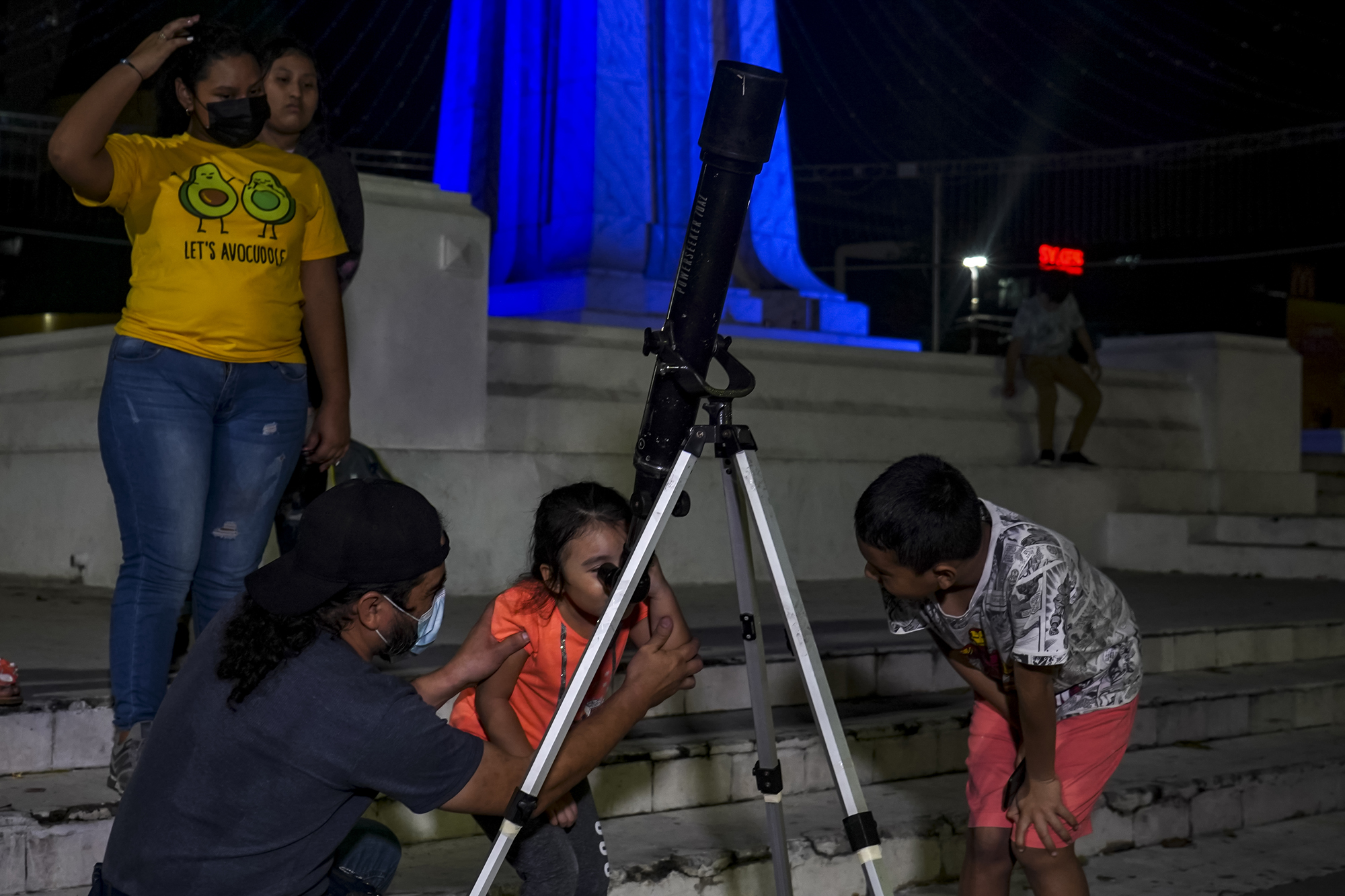
People gather to observe the partial lunar eclipse in San Salvador, capital of El Salvador on November 19, 2021. Photographer Alex Pena took this image for the Anadolu Agency via Getty Images.
Latin American and Asian countries witnessed the longest lunar eclipse of the century.
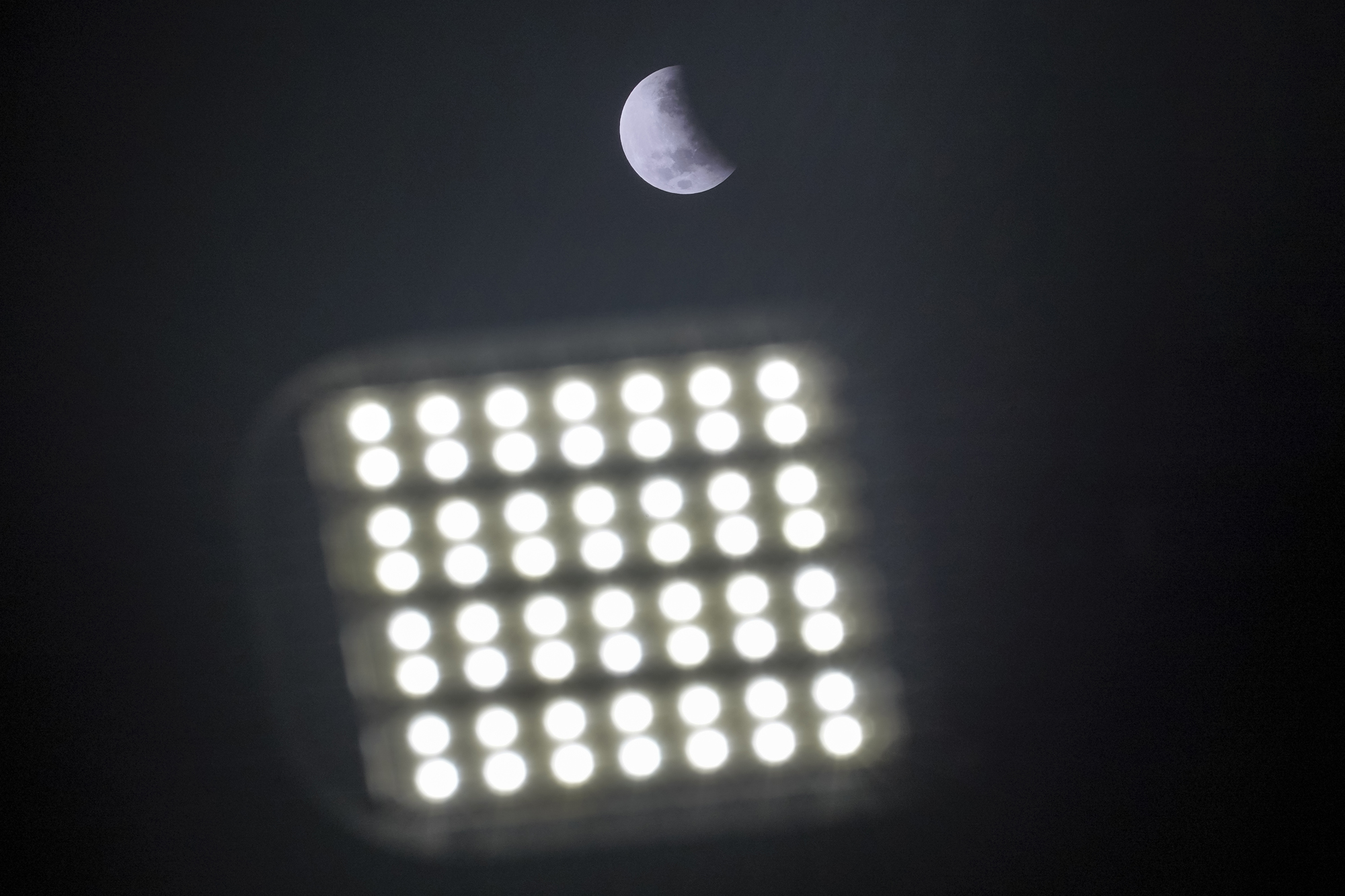
The Beaver Moon partial lunar eclipse is observed in San Salvador, capital of El Salvador on November 19, 2021. Photographer Alex Pena took this image for the Anadolu Agency via Getty Images.
Latin American and Asian countries witnessed the longest lunar eclipse of the century.
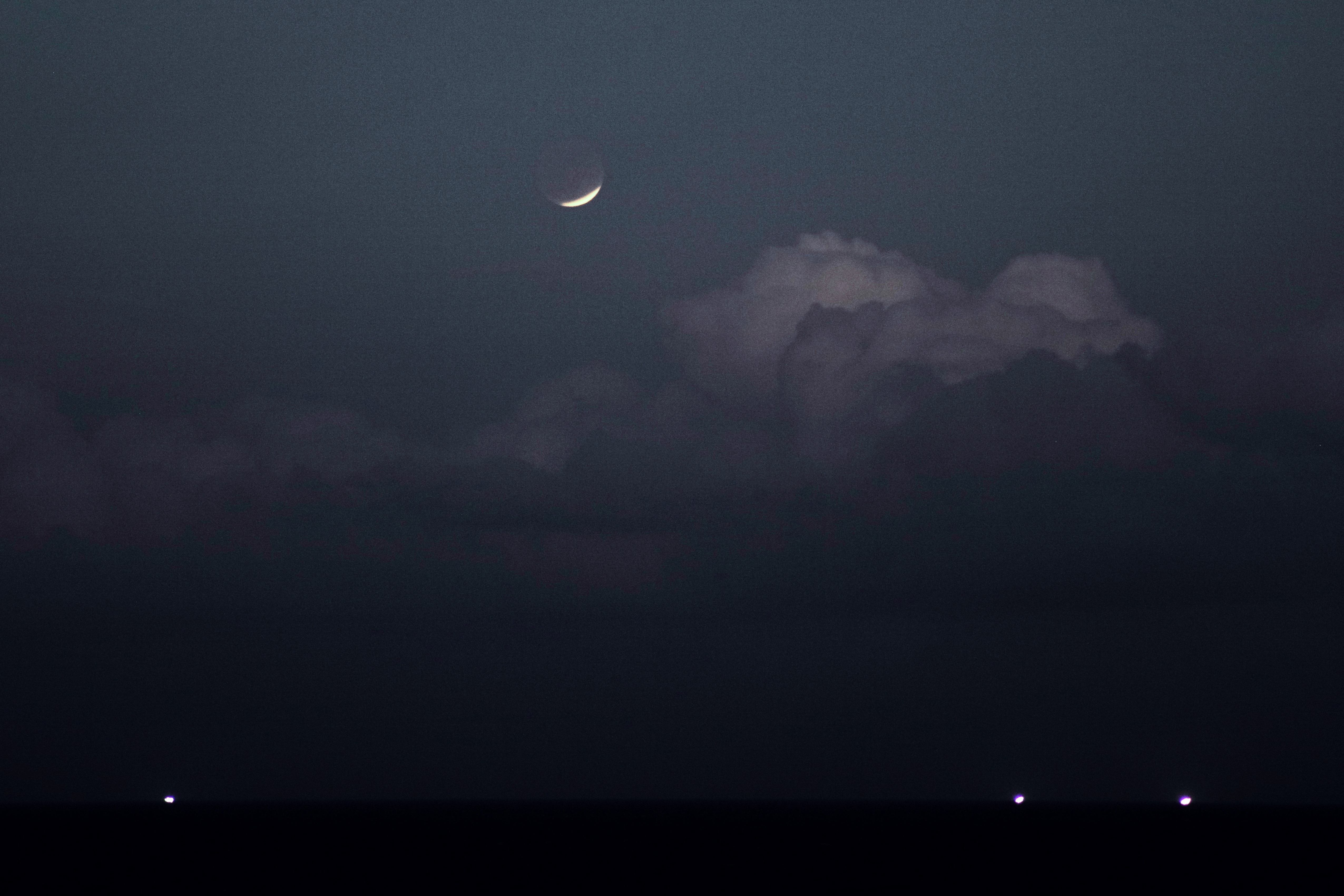
A partial lunar eclipse is seen from the Sijiaoku lookout in New Taipei City on November 19, 2021.
This photo was taken by photographer Sam Yeh for the AFP and Getty Images news services.
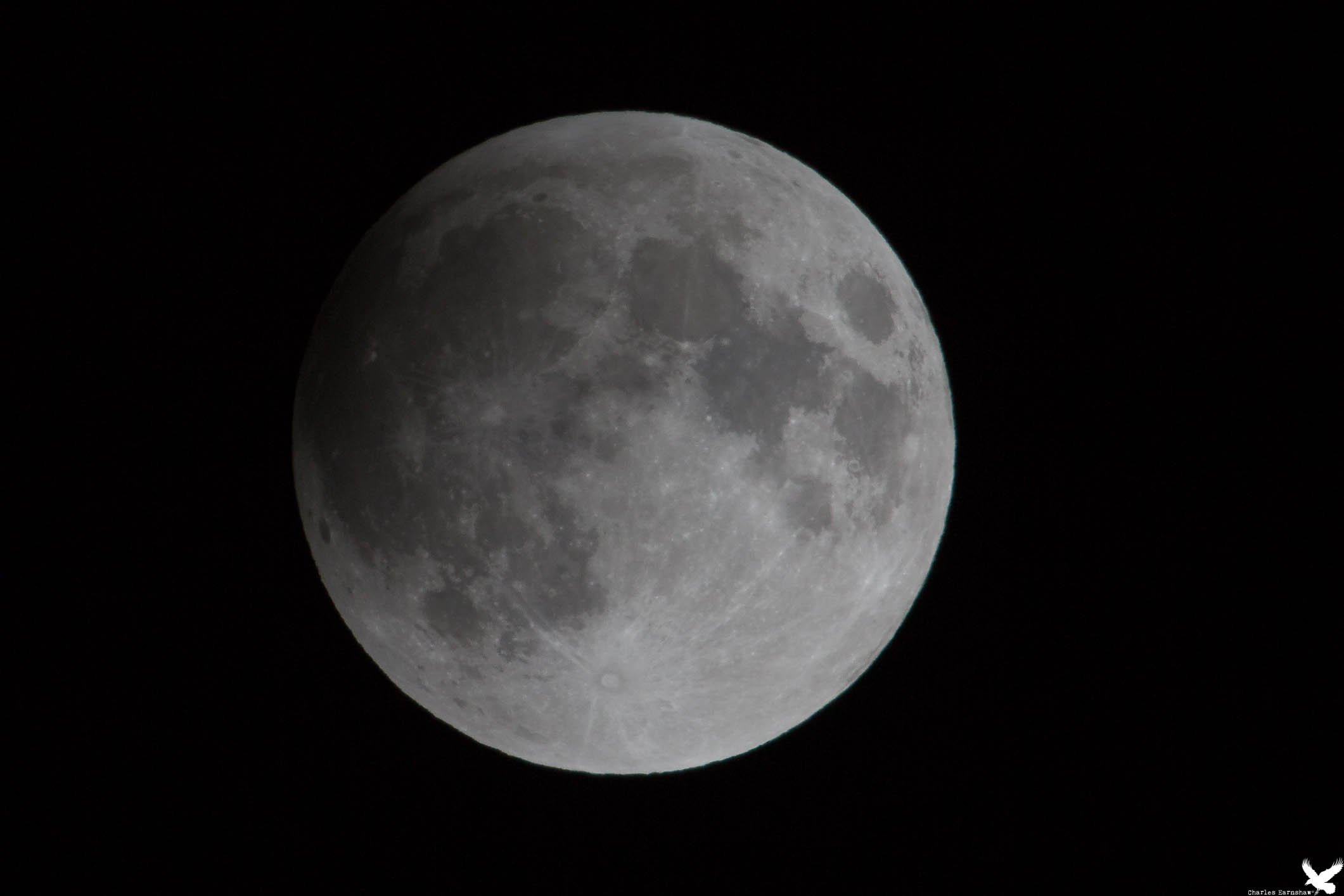
Skywatcher Charles Earnshaw of Anchorage, Alaska captured this view of the Beaver Moon partial lunar eclipse late on Nov. 18, 2021 PST at the start of the longest partial lunar eclipse of the 21st century at 6 hours, 2 minutes.
"I was alone in my backyard here in Anchorage and the temperature was right around -2 degrees. I saw one big shooting star to the east which was also fun to see!" he told Space.com in an email.
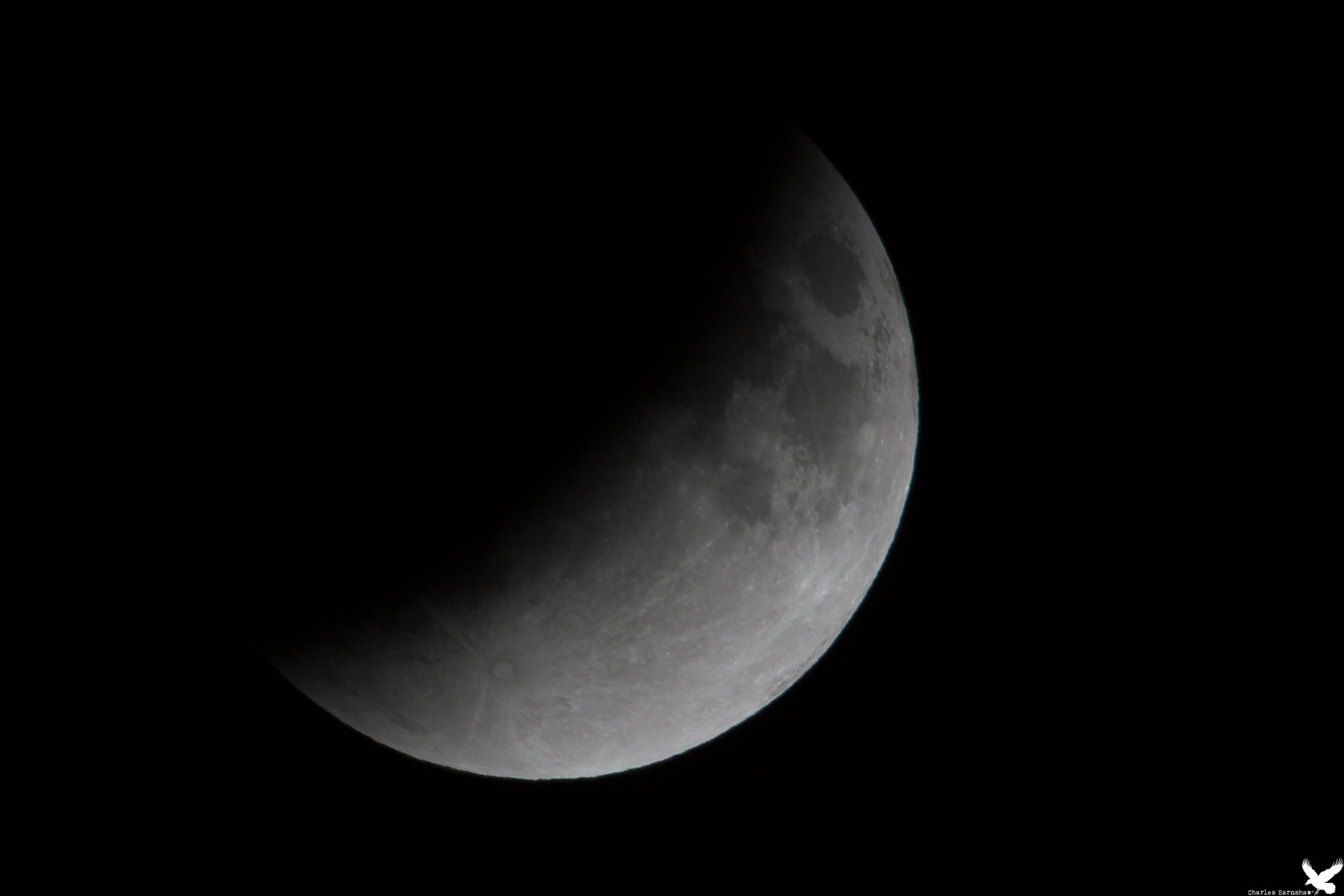
This image from Charles Earnshaw of Anchorage, Alaska shows the Beaver Moon partial lunar eclipse late on Nov. 18, 2021 PST about an hour into the event.
"Earlier, I tried hard to get a good shot of the moon rising over the Chugach Mountains, but just barely made it in time," he told Space.com in an email. "I wound up getting an incredible shot of the C-17 on its landing approach right in front of the moon! Its been one heck of an evening and night for shots of the moon!"
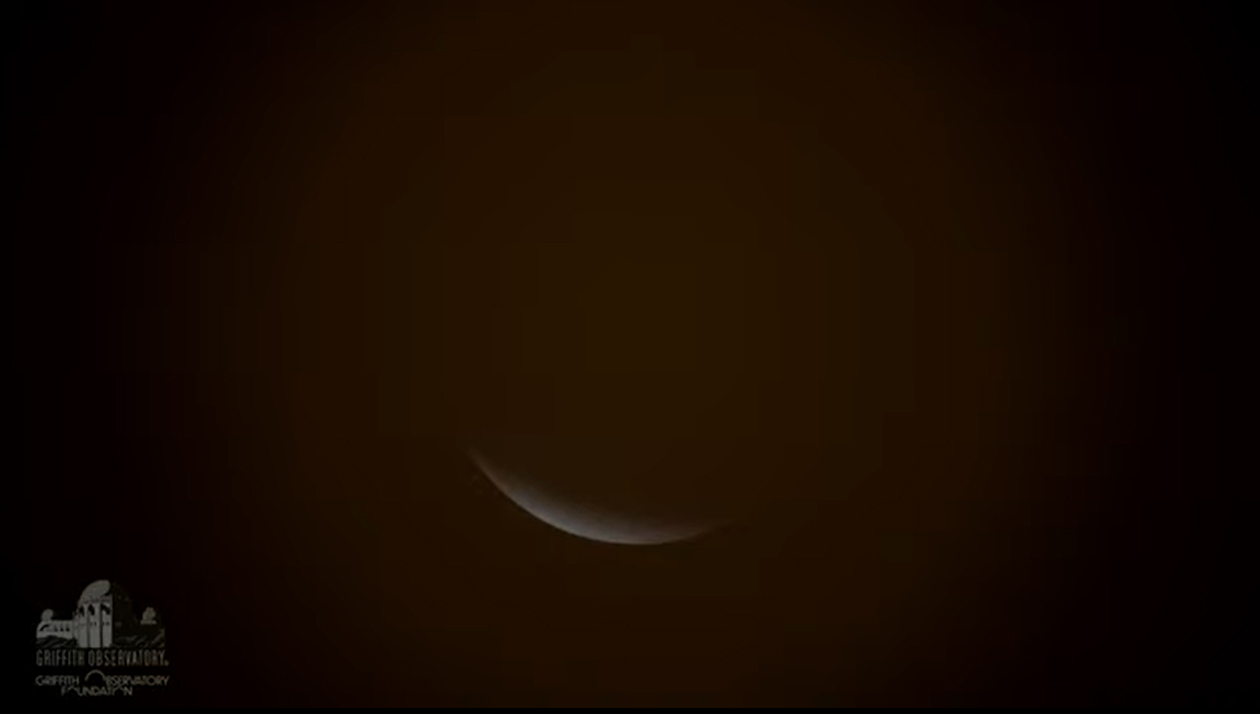
The Beaver Full Moon is nearly completely blocked by Earth's shadow during the near-total lunar eclipse of Nov. 19, 2021 as seen through a telescope from the Griffith Observatory in Los Angeles, California.
The observatory was one of many astronomy centers and museums that offered live video webcasts and commentary of the lunar eclipse, the last of 2021.
The moon was 97% covered by the Earth's shadow during the longest partial lunar eclipse in 580 years.
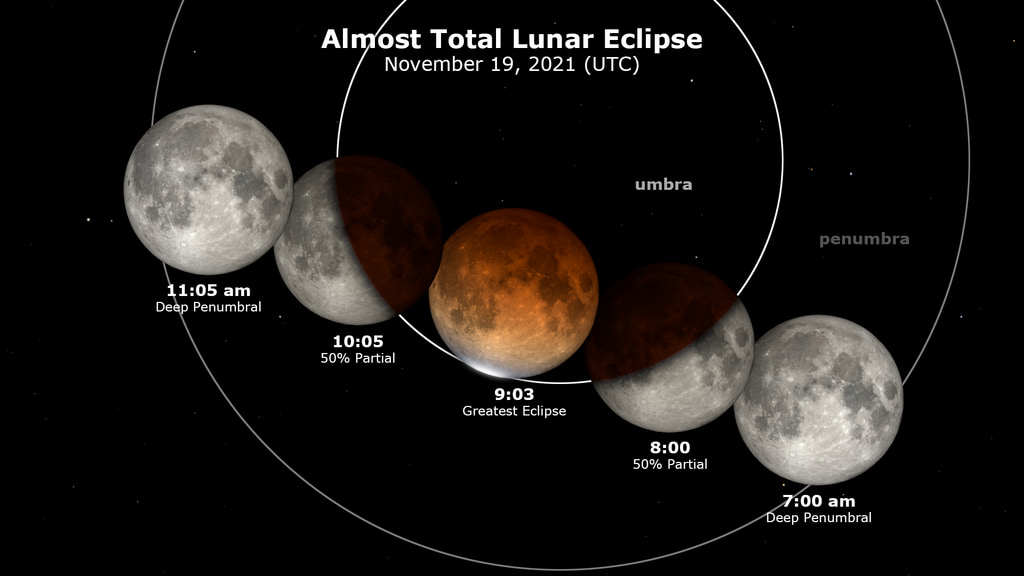
This NASA graphic diagram shows the stages of the partial lunar eclipse on Nov. 18-19, 2021.
The Beaver Moon lunar eclipse lasted 6 hours and 2 minutes and was the longest partial solar eclipse of both the century and the last 580 years.
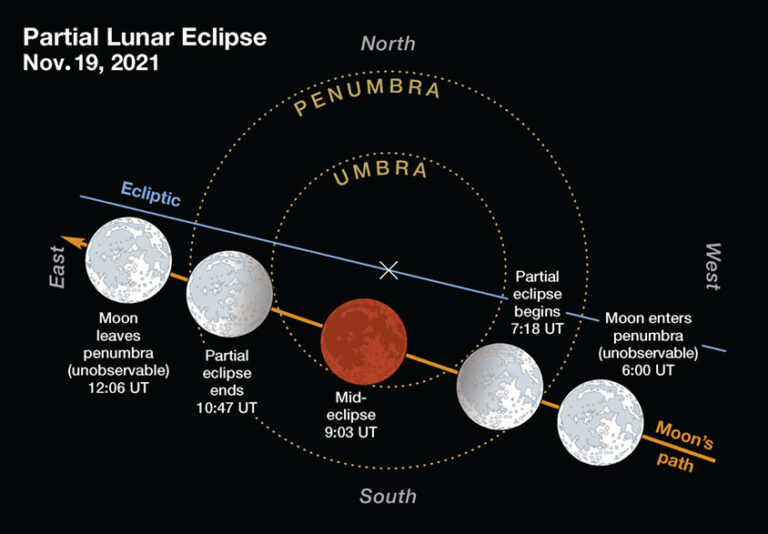
This Sky & Telescope chart of the Beaver Moon partial lunar eclipse of Nov. 18-19, 2021 details the stages of the event as well as their times.
The November 2021 partial lunar eclipse began at 1:02 a.m. EST and lasted 6 hours and 2 minutes, making it the longest partial lunar eclipse of the 21st century and the longest partial lunar eclipse in 580 years.

This sky map from Starry Night Software and SkySafari shows just how deep the moon passed through the umbra, the darkest part of Earth's shadow, during the partial lunar eclipse of Nov. 19, 2021 during the Beaver Full Moon.

This NASA map shows the wide swath of the Earth from which the Beaver Moon partial lunar eclipse was visible overnight on Nov. 18-19, 2021.
All of North America, Central America and South America were in the visibility area, along with parts of Australia, Asia and Europe, making it visible to potentially millions of skywatchers depending on weather conditions.
The Beaver Moon lunar eclipse lasted 6 hours and 2 minutes and was the longest partial solar eclipse of both the century and the last 580 years.
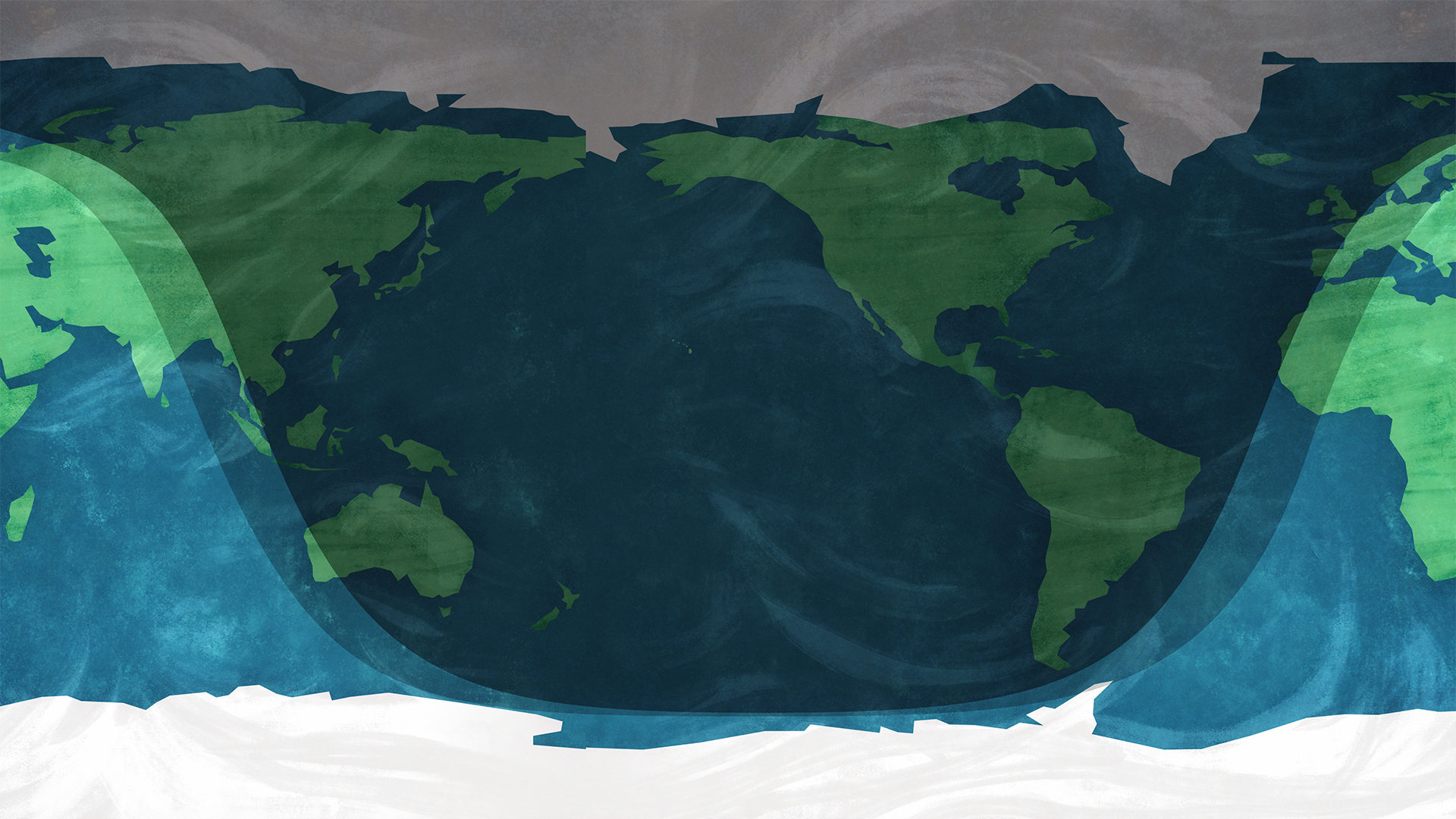
Another NASA map shows where the Beaver Moon partial lunar eclipse was visible from overnight on Nov. 18-19, 2021.
All of North America, Central America and South America were in the visibility area, along with parts of Australia, Asia and Europe, making it visible to potentially millions of skywatchers depending on weather conditions.
The Beaver Moon lunar eclipse lasted 6 hours and 2 minutes and was the longest partial solar eclipse of both the century and the last 580 years.
To find out when the next lunar eclipse is check out our informative lunar eclipse guide.

Tariq is the award-winning Editor-in-Chief of Space.com and joined the team in 2001. He covers human spaceflight, as well as skywatching and entertainment. He became Space.com's Editor-in-Chief in 2019. Before joining Space.com, Tariq was a staff reporter for The Los Angeles Times covering education and city beats in La Habra, Fullerton and Huntington Beach. He's a recipient of the 2022 Harry Kolcum Award for excellence in space reporting and the 2025 Space Pioneer Award from the National Space Society. He is an Eagle Scout and Space Camp alum with journalism degrees from the USC and NYU. You can find Tariq at Space.com and as the co-host to the This Week In Space podcast on the TWiT network. To see his latest project, you can follow Tariq on Twitter @tariqjmalik.
